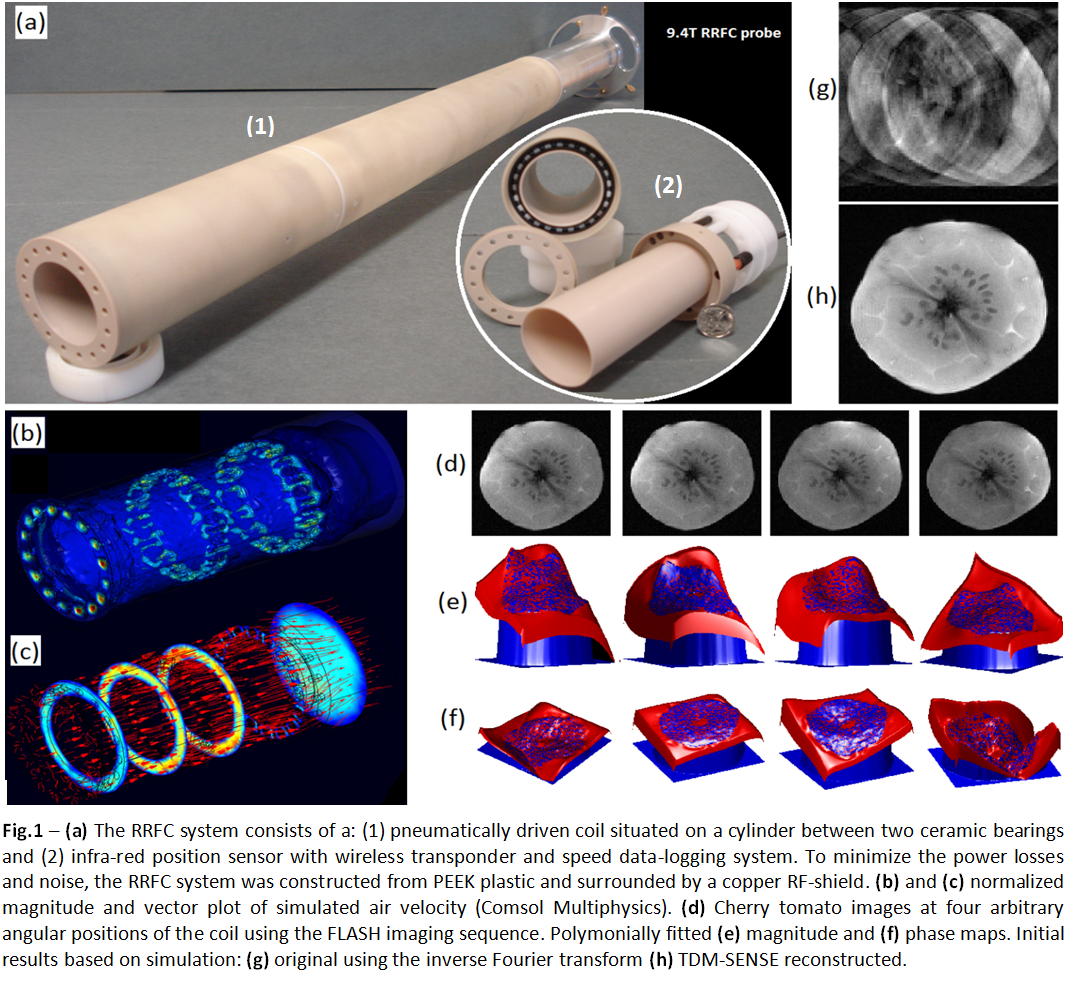posters 5th Asia-Pacific NMR Symposium 2013
Rotating Radiofrequency Coil (RRFC) Probe for 11.7T Small-animal MRI (#222)
Introduction: Recent studies have demonstrated that mechanically rotating a single radiofrequency (RF) coil (RRFC) can emulate a large RF coil array by time-division-multiplexing (TDM) [1-2] and thereby accelerate the MR image acquisition. The advantages of RRFC are that it requires only one RF channel and averts coil–coil coupling interactions. This work presents the first RF system for 11.7T small-animal MRI.
Method: Fig.1 (a-c) shows the 11.7T MRI probe and air flow simulation results. The RF coil was tuned to 500MHz and matched to 50Ohm. The maximum measured rotational speed was over 20,000 rpm (i.e. about 3ms period, which is comparable to the MRI RF pulse durations) and varied by less than 1.6% from the mean speed (experiment).

Results: Fig. 1 (d-f) shows four of the images used to obtain the sensitivity maps of the coil, as part of the TDM-Sensitivity Encoding (TDM-SENSE) image reconstruction [2]. Work is currently in progress to use the speed measurement data in conjunction with the pulse sequence parameters to subsequently un-alias the resulting k-space and form good quality images as shown in Fig.1 (g-h).
Conclusion: This ongoing study presented the first 11.7T small-animal MRI probe, based on the rotating RF coil principle. Further work is in progress on the experimental verification of this approach.
References:
- A.Trakic, et al, Concepts in Magn Reson: vol. 35B, 2009.
- A.Trakic, et al, J of Magn Reson,vol 201,2009.